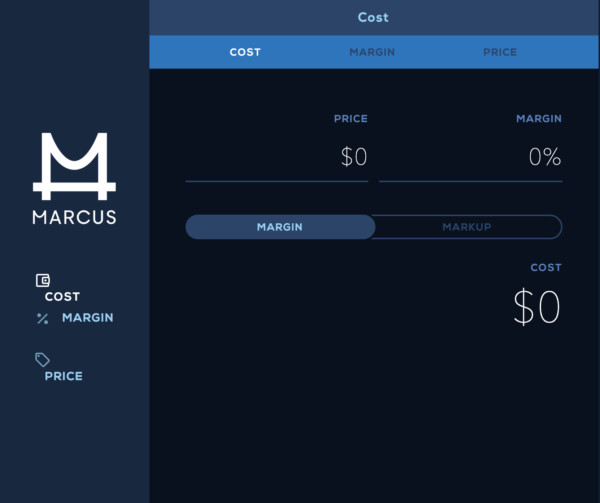It doesn’t matter if you’re managing one person or a thousand, ensuring that your employees are pleased with their work and incentivized to do their best at all times is crucial for productivity and retention. When you succeed at that, your company will be better for it. These techniques to incentivize employees take little effort on your part, and they can yield limitless results. None of these practices cost a lot of money or cut into your valuable time, so you can keep your expenses in check while creating active, loyal, and more productive employees. Marcus always says, “The customer is not No. 1 to me. They’re No. 2, right behind the employee.”
Be Yourself
Be consistent with your beliefs and values through your leadership style. Authenticity in the office is valued more than ever, and the direction in which you lead your team has to be rooted in your principles and ideals.
Being candid and open while treating your team with respect and diplomacy requires a deft hand, but it will gain your team’s trust. Ultimately, you have to exemplify the corporate culture you would like to see in your company.
Create an Open Work Environment
Jim Whitehurst, current President of IBM, chair of the board at Red Hat, and author of The Open Organization, writes, “…Nothing builds engagement more than being accountable to the people in your organization.” (Whitehurst, 2015.) Accountability is critical in an open work environment because it shows your employees that you aren’t afraid to admit you are wrong. It also allows people to share in your successes. In creating an authentic learning culture at your company, you’re incentivizing employees through honesty and transparency. That means being available and accountable for one another.

Give People more Freedom
Having an honest, open dialogue about achievable goals with employees will help you keep their work-life balance in check. Let your people live their distinctive lifestyles, and they may bring a new perspective on how to tackle an obstacle that stumps you. As they say, you can always use a fresh pair of eyes – and when your employees come to you with a good idea, it’s important to encourage them to run with it. Such was the case with the father and son owners behind a specialty cheese store in New York.
When Marcus arrived to consult with them, he immediately noticed a family-run business that had been run down. Marcus helped them renew their passion, revamp their business, and re-energize their employees, by empowering one longtime employee to cultivate new products such as cheese knives and boards that complemented their line of cheeses so they could cross-sell these products to their customers. The result? The product line brought in by the employee was a hit and Marcus extended him an offer to become a minority partner in the business. As you can see, a little freedom can go a long way.

Get to Know the Individual
As cutthroat as the business world can be, it’s not war. Your employees will respond to you better if you have a trusting relationship than if they are solely following the chain of command. One of the most important ways to build that trust is to care for your people genuinely. Making sincere connections motivates employees. Recognizing birthdays, knowing their spouse’s name, how many children they have, or knowing their favorite hobbies are lines of questioning that will help you follow up on the little things. Genuine care is a powerful motivator. And in family businesses, these are things many take for granted.
Assuming just because you’re related that the love is implied is a recipe for disaster. This was another one of the challenges the New York cheese shop was facing. The father-son team assumed that their business relationship was okay just because their personal relationship was fine. The father took the son’s hard work for granted, and the son had resentment towards his father for how he had been treating him and their business arrangement—he had been working for years, seven days a week, 14- to 15-hour days, without pay. Their lack of communication was killing the business. The son was frustrated, and the father was unaware of this frustration. Communication is imperative at all levels in your team. Sit down and have one-on-ones with your team members individually to get to know them better from a business perspective, even if they are family.
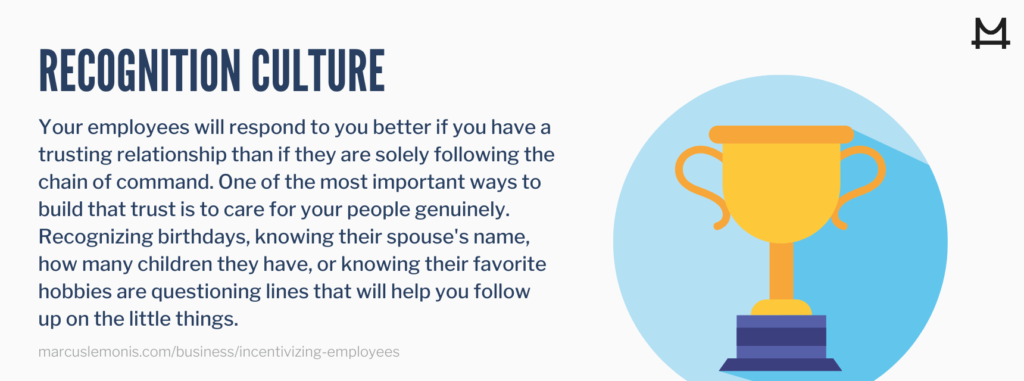
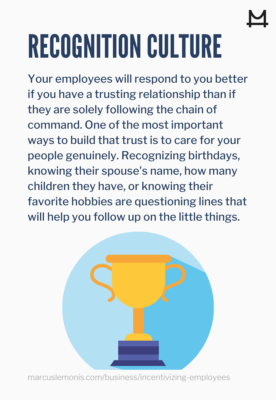
Appreciate Good Work
As far as incentivizing employees to work harder and be happier goes, congratulating your team on a job well done should be the most natural thing a manager can do. However, one study found that 61% of employees stated that not receiving recognition for their achievements was the number one complaint they had about their superiors. (Solomon, 2015.) Simple recognition will encourage your employees to keep striving for excellence, and it is also a great way to retain talent in your business. You don’t have to provide your staff with 100,000 hours of free massages like Google did for its employees in 2012. (Krishnaswamy, 2019) Something as simple as, “I saw how hard you worked on [project name]. The way you handled [challenge they excelled at] impressed me,” will go a long way toward incentivizing employees. Being specific in your kudos keeps your compliments from sounding hollow. As Marcus has said, “People will work for recognition and opportunity more than they’ll work for anything else.”
Empower People through Technology
Nobody likes feeling like a cog in the machine, doing menial tasks day in and day out. As a world-class boss, you can free up your employees’ time by finding solutions to automate simple tasks. Your employees will appreciate your support, and they will be able to do their jobs quicker and more efficiently. According to a KRC Research survey, 52% of business leaders found a reduction in manual errors after implementing automation into their companies. (von Kessel, 2017.)

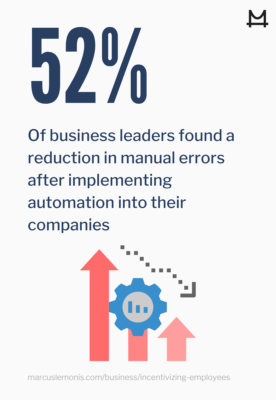
Encourage Risk-Taking
When dot-coms took off and began making money hand over fist, a whole new vernacular started flying around offices worldwide. One of them was the “culture of innovation.” As those companies aged and became more risk-averse in some ways, those cultures of innovation remained. Why? Because encouraging your employees to take risks and push boundaries makes them more self-possessed and independent.

When you are incentivizing employees in your company, you should present them with problems and let them figure out the solution. For example, Facebook CEO and founder, Mark Zuckerberg, says that he takes care of the master plan, and then he allows his best people to take care of figuring out how to implement his vision. He puts it this way, “Okay, is this going to destroy the company? Because if not, then let them test it. If the cost of the test isn’t going to be super high, then in general, we are going to learn a lot more by experimenting and letting the teams go and explore the things that are worth exploring than by having a heavy hand in that.” (Clifford, 2017).
Have a Single Mission with Everyone Behind It
Mark Zuckerberg’s way of incentivizing employees to be independent by taking risks only works if every team member is envisioning the same end goal. It is imperative to keep people involved and enthusiastic about their projects. Working toward a common goal will bring everyone in your company together, and it will also encourage a high-energy culture of shared ideas.
Motivate People
Incentivizing employees without giving them adequate management will not yield the results you’re after. You need to recognize when someone needs a push toward greatness, even if they don’t think they can do it. An excellent way to do this is to sit down with your employees and set goals with them. Then, you can check in once a week or once a month to ensure they are reaching their goals and staying on track. A good manager is imperative when incentivizing employees. Remember, their goals must be attainable yet challenging to help them feel like a winner at work. Marcus often says: “If you don’t have emotion and you don’t have passion, then you shouldn’t be in business, because money is a byproduct, not the purpose.” However, if there already is enough passion, money could be a great secondary motivator. Take one of the team members of a California-based coffee, tea and dessert company as an example. There is no doubt that he was passionate about the organization and wanted to help its owner build the business; after all, he worked for ten years without getting paid. But what better way to thank him for his service and motivate him to go even further for the business, than giving him equity in the company (and a salary, of course). Now he has a paycheck and owns a large percentage of the company where he has been a core team player for the past 10+ years. Now, he’s even more fired up than ever before to make the company the best it can be because he has a personal stake in the business.
Hire the Best People
When you push people to perform as well as you know they can, your goal should be to bring their best qualities to the surface. You can’t make someone into something they are not. That’s why it’s imperative to make sure your new hires are a good fit for your company and that your company is a good fit for them. Speaking with your current employees and listening to them describe your corporate culture is a great way to figure out how to pitch your jobs to prospective workers. It’s also a great way to keep a finger on the pulse of your employees’ job satisfaction.
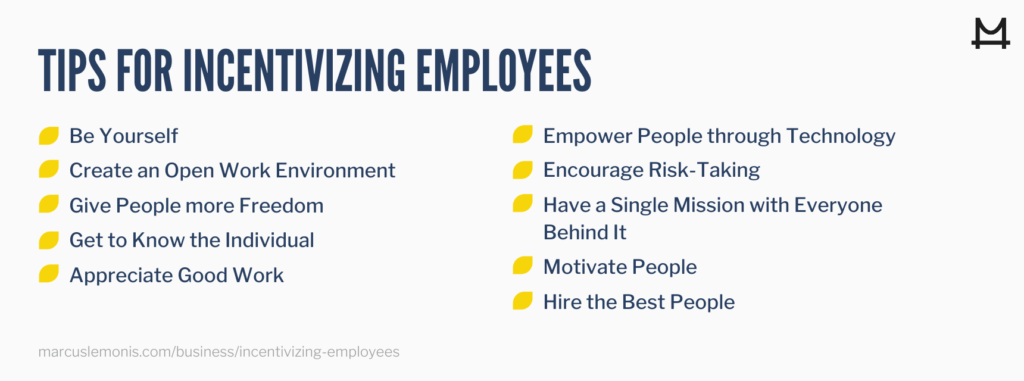
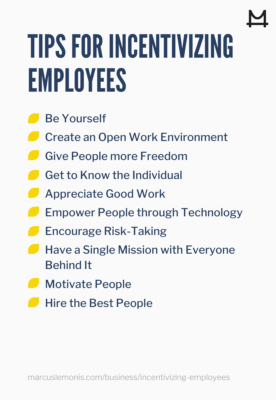
Incentivizing employees is not as straightforward as throwing a pizza party once a month. It’s a series of decisions that you have to make and give continual upkeep. When you hire people who respond well to your brand of encouragement and incentivization, you are creating a relationship that improves all parties involved. Keeping your employees busy, happy, independent, and hungry for improvement will yield more efficiency and production. So take Marcus’ advice and keep these tips in mind the next time you meet with your employees. If you do, you’ll be moving in the right direction to maximizing your company’s potential.
- How are you currently getting the most out of your people?
- What new management strategies are you going to implement?
Whitehurst, J. (2015, Jun. 2). Be a leader who can admit mistakes. Retrieved from https://hbr.org/2015/06/be-a-leader-who-can-admit-mistakes
Solomon, L. (2015, Jun. 24). The top complaints from employees about their leaders. Retrieved from https://hbr.org/2015/06/the-top-complaints-from-employees-about-their-leaders
Von Kessel, I. (2017, Aug. 11). The effects of automation at work. Retrieved from https://www.statista.com/chart/10659/risks-and-advantages-to-automation-at-work
Clifford, C. (2017, Jun. 5.). How Mark Zuckerberg keeps Facebook’s 18,000+ employees innovating: ‘is this going to destroy the company? If not, let them test it.’ Retrieved from https://www.cnbc.com/2017/06/05/how-mark-zuckerberg-keeps-facebook-employees-innovating.html

